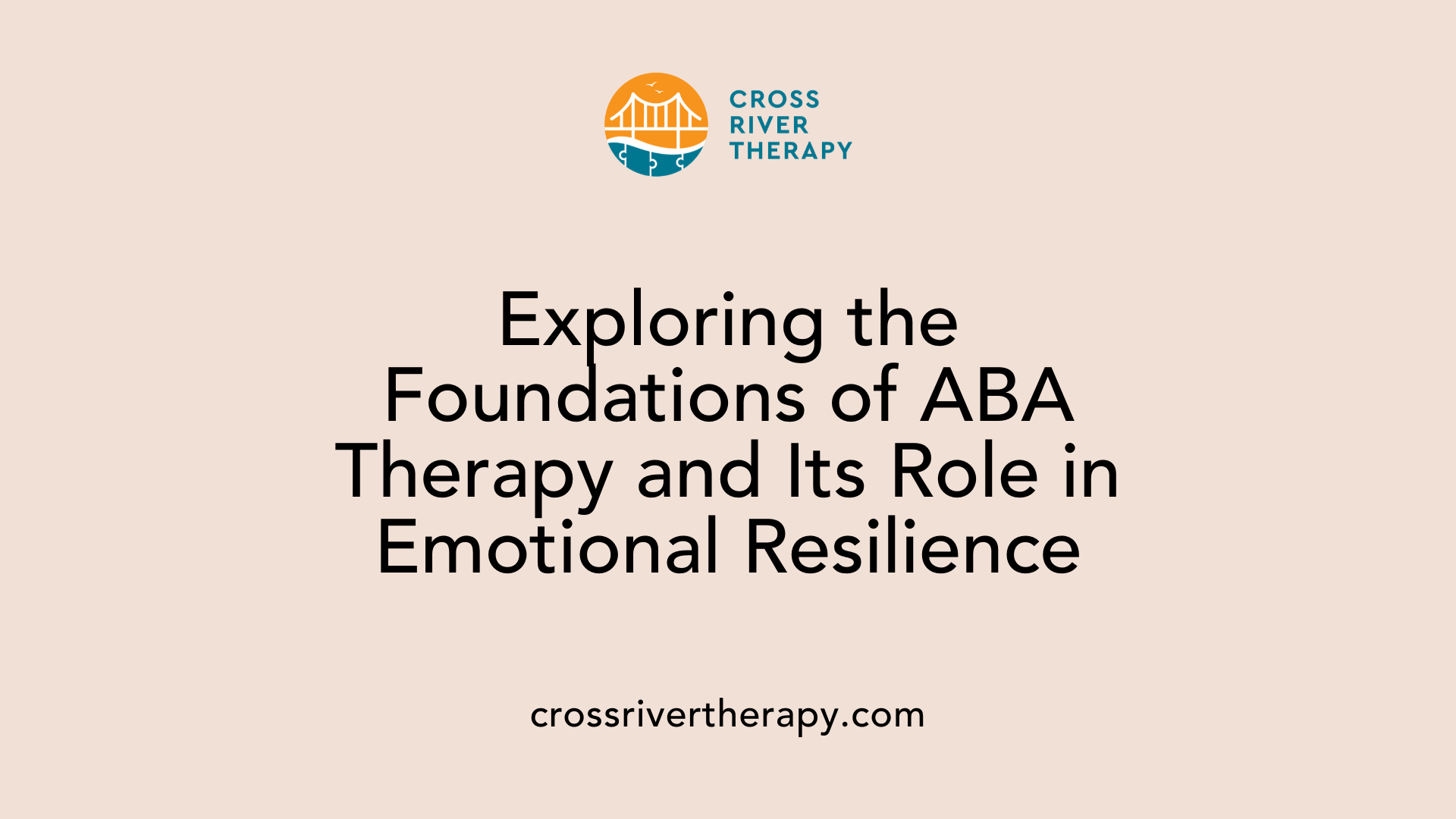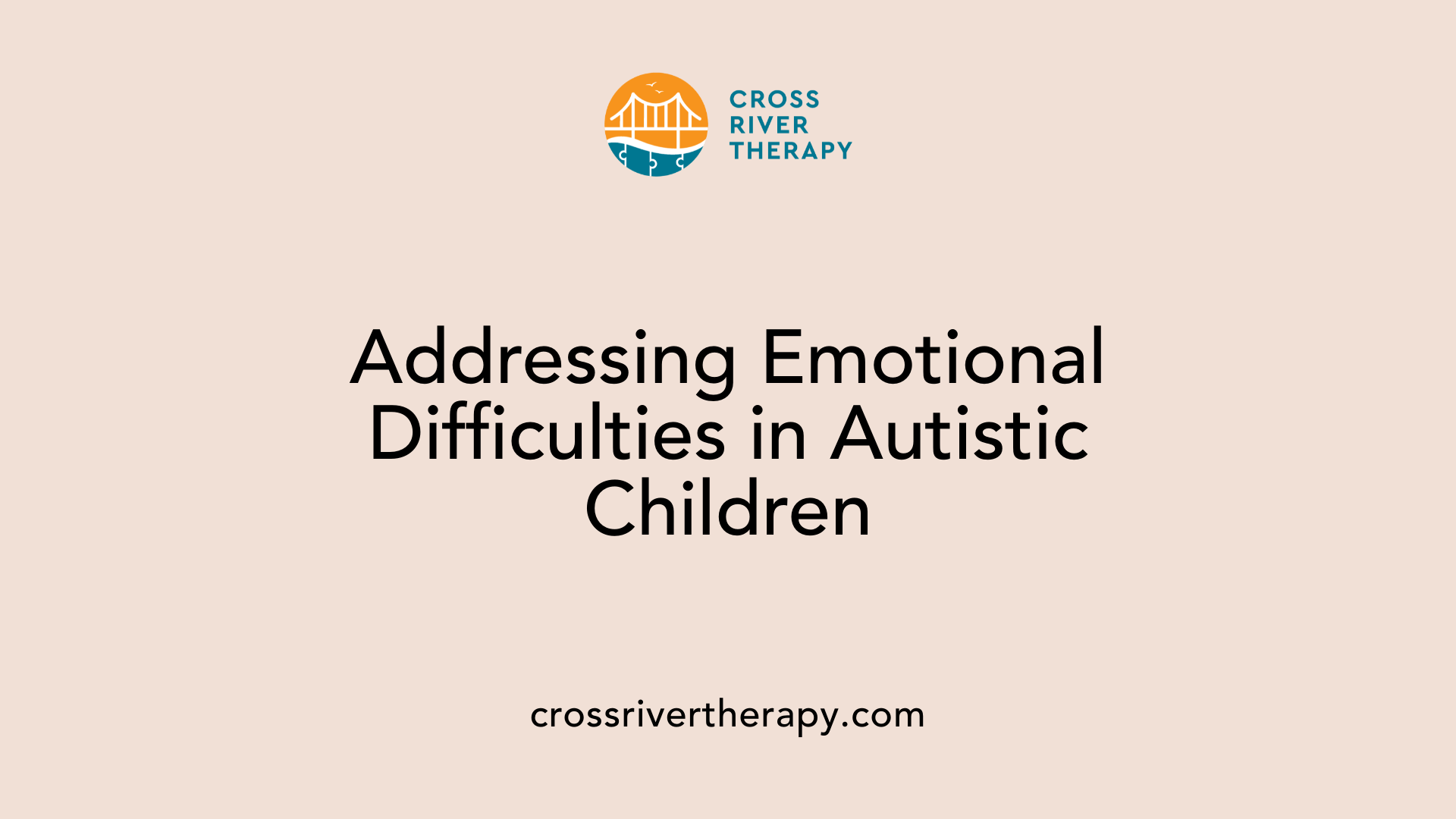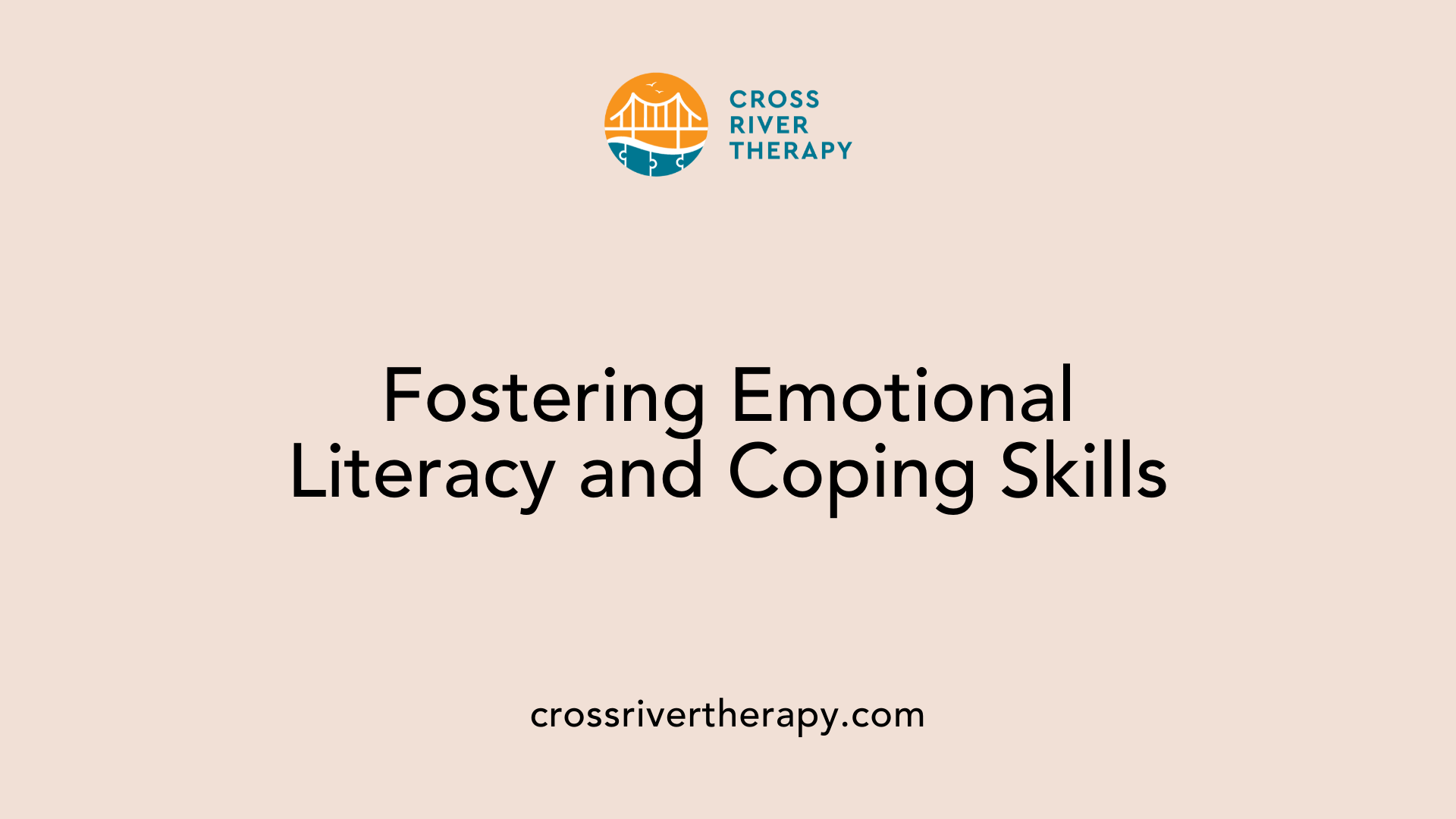How ABA Therapy Encourages Children to Build Emotional Resilience
The Role of ABA Therapy in Shaping Emotionally Resilient Kids
Introduction to Emotional Resilience in Autism
Emotional resilience, the ability to rebound from challenges and adapt to setbacks, is crucial for the healthy development of children, especially those with autism. These children often encounter unique challenges such as sensory overload, difficulties in social communication, and heightened anxiety. Applied Behavior Analysis (ABA) therapy emerges as a significant tool in nurturing resilience, offering a structured method to modify behaviors and strategically enhance emotional and social capabilities.
Understanding ABA Therapy and Emotional Resilience

What is ABA therapy, and how does it help develop emotional resilience in children with autism?
ABA therapy, or Applied Behavior Analysis, is a structured approach that utilizes principles of behavior modification to support children with autism. It focuses on teaching socially significant behavior through positive reinforcement and tailored interventions. One of the primary goals of ABA is to foster emotional resilience in these children, an essential skill for navigating life’s challenges.
By helping children identify and label their emotions, ABA therapy enhances emotional regulation. Therapists employ various strategies such as role-playing and social stories to teach coping mechanisms. This approach enables children to effectively manage overwhelming feelings, engage in positive self-talk, and practice relaxation techniques like deep breathing.
Moreover, ABA therapy interventions enhance self-awareness, allowing children to recognize their emotional triggers and responses. This self-awareness is vital as it fosters healthier interactions and improves their capacity for emotional regulation. As children learn to cope with stressors, they become more adaptable and confident in handling social situations, which bolsters their resilience.
Here’s a quick overview:
| Aspect | Details | Benefits |
|---|---|---|
| Emotional Literacy | Identifying and labeling feelings | Improves emotional regulation |
| Coping Strategies | Techniques like visualization, problem-solving | Helps manage stress and anxiety |
| Self-Awareness | Reflective practices like journaling | Enhances understanding of emotions |
| Social Skills | Role-playing to navigate social scenarios | Builds relationships and a sense of belonging |
In summary, ABA therapy not only aids in emotional regulation but also leads to healthier social connections, effectively improving the overall emotional resilience of children with autism.
Techniques within ABA Therapy

What are some specific ABA therapy techniques that foster emotional resilience in children with autism?
ABA therapy offers a variety of techniques aimed at building emotional resilience among children with autism. One significant method is positive reinforcement, where desirable behaviors are rewarded, helping children learn to express emotions in healthy ways. This approach encourages a supportive atmosphere where emotional expression is valued.
Another effective technique is modeling, where adults demonstrate healthy emotional responses in various situations. By observing these behaviors, children learn how to navigate their own emotional challenges.
Incorporating mindfulness exercises such as deep breathing and meditation can further assist children in managing stress, enhancing their emotional regulation skills. Tools for emotional identification, like mood charts and emotion cards, support children in understanding and labeling their feelings, contributing to better emotional literacy.
Role-playing scenarios allows children to practice emotional regulation and problem-solving in controlled environments, fostering their ability to adapt to real-world stresses.
Additionally, implementing structured routines can provide predictability, which is crucial for emotional safety.
To summarize, here’s how these techniques contribute to emotional resilience:
| ABA Technique | Description | Emotional Resilience Benefit |
|---|---|---|
| Positive Reinforcement | Rewards desired behaviors | Encourages positive emotional expression |
| Modeling | Demonstrates healthy emotional responses | Teaches adaptive emotional coping |
| Mindfulness Exercises | Practices like deep breathing and focus | Aids in stress management and emotional regulation |
| Emotional Identification | Tools like mood charts to label feelings | Improves emotional awareness and understanding |
| Role-Playing | Simulated interactions for skill practice | Prepares for real-life emotional challenges |
| Structured Routines | Consistent schedules and routines | Increases predictability and emotional safety |
These combined techniques not only foster resilience but also build a foundation for healthy emotional development in autistic children.
Facing Emotional Challenges in Autism

Challenges in emotional development for autistic children
Children with autism often encounter various emotional obstacles. They may struggle with understanding and expressing their own emotions, leading to difficulties in managing anxiety or sensory overloads. Social communication challenges can further hinder their ability to form relationships, which are essential for emotional support during tough times.
Moreover, these children might face undue pressure when trying to adapt to rapid changes or unfamiliar situations, which can escalate their emotional responses and result in distress.
How ABA addresses emotional challenges
Applied Behavior Analysis (ABA) therapy offers targeted strategies to help children navigate these emotional hurdles. One effective approach is teaching emotional literacy, allowing children to recognize, label, and manage their feelings better. Techniques such as journals, mood charts, and role-playing foster self-awareness and empower them to communicate their emotions effectively.
Additionally, ABA incorporates positive reinforcement to encourage and reward desirable behaviors. By creating supportive environments, therapists model resilient behavior and teach adaptive strategies to handle challenges. For instance, coping mechanisms like deep breathing and visualization are introduced to help children regulate their emotions during overwhelming experiences.
The therapy's emphasis on social skills development further aids in improving children's interpersonal relationships and emotional responses. Through tailored interventions, ABA not only addresses emotional challenges but also promotes resilience, enabling children to thrive in challenging circumstances.
ABA's Impact on Emotional Development and Coping Strategies

How does ABA therapy impact emotional development and coping strategies in autistic children?
ABA therapy plays a transformative role in the emotional development of autistic children. By enhancing communication and social skills, it allows children to express their feelings and navigate social situations more effectively. This reduction in frustration often leads to improved emotional stability, making it easier for them to cope with everyday challenges.
A key component of ABA therapy is the focus on emotional regulation. Through structured interventions and positive reinforcement, children learn various coping strategies, such as relaxation techniques like deep breathing and visualization. These techniques empower them to manage overwhelming emotions, thereby fostering resilience in stressful situations.
Additionally, the therapy promotes strong social connections within families. As communication skills improve, children often establish more profound emotional bonds with their family members, leading to a supportive environment conducive to emotional growth. This harmonious atmosphere is crucial as it allows children to practice their skills in a safe space, reinforcing their learning and resilience further.
Overall, ABA therapy not only supports individual emotional development but also enhances the emotional landscape of the home, promoting resilience and a sense of belonging.
Key Principles of ABA Therapy and Flexibility
What are the key principles of ABA therapy, and how do they promote psychological and cognitive flexibility?
Applied Behavior Analysis (ABA) therapy employs several key principles to modify behavior effectively. These principles include reinforcement, punishment, extinction, and systematic observation. Modern applications of ABA emphasize not just behavioral modification, but also psychological and cognitive flexibility, especially beneficial for children with autism.
Here’s how ABA promotes flexibility:
Reinforcement Techniques: Positive reinforcement is a cornerstone of ABA, where rewarding desired behaviors helps children associate positive experiences with appropriate emotional responses. This builds resilience by encouraging engagement and personal growth.
Cognitive Flexibility Training: ABA incorporates cognitive flexibility techniques through problem-solving activities and structured play. These activities teach children to adapt their responses to new situations, enhancing their ability to cope with stress and anxiety.
Task Breakdown: By breaking down tasks into manageable steps, ABA supports the development of independent problem-solving skills, allowing for strategic thinking. Children learn to consider various approaches to challenges rather than relying on a single solution.
Encouraging Exploration: ABA focuses on fostering independence and critical thinking. Children are encouraged to explore multiple solutions and adapt their responses, which helps them move beyond rigid thought patterns and develop a resilient mindset.
Overall, ABA therapy not only helps children modify challenging behaviors but also nurtures their capacity for adaptability and strategic thinking, laying the groundwork for emotional resilience.
Environmental Factors for Enhanced Resilience
What environmental factors are important in fostering resilience in children with autism?
A supportive environment plays a pivotal role in fostering resilience in children with autism. Consistent routines establish predictability, making children feel secure. This sense of stability minimizes anxiety and gives them the confidence needed to tackle challenges.
Calm and predictable settings significantly contribute to reducing sensory overload. By ensuring environments are sensory-friendly, children can focus on emotional regulation without the distraction of overwhelming stimuli.
Supportive settings and emotional skills
Emotional skills are equally crucial. By helping children recognize and manage their feelings, we empower them to handle stress effectively. Techniques such as journaling, mood charts, or using emotion cards can improve their emotional literacy, facilitating healthier interactions.
Additionally, strong relationships are vital. Children with positive social connections are more likely to seek support during tough times, enhancing their coping strategies.
Engaging in problem-solving
Engaging children in problem-solving activities fosters critical thinking and decision-making skills. This engagement not only boosts their self-esteem but also equips them with the tools needed to face everyday challenges.
By emphasizing these environmental factors—supportive relationships, emotional skills, and problem-solving opportunities—children with autism can develop significant resilience, preparing them for life's various challenges.
Promoting Emotional Growth Through ABA

Emotional literacy for resilience
Teaching emotional literacy plays a crucial role in nurturing resilience in children with autism. By helping them identify and label their emotions, we empower them to better regulate their responses during challenging situations. Tools such as mood charts, emotion cards, and journaling can assist in this learning process, giving children a clearer understanding of their feelings.
This emotional understanding fosters greater self-awareness, which is essential for navigating everyday challenges. Consequently, children become more capable of managing stress and anxiety, ultimately leading to improved emotional resilience.
Understanding emotional triggers
Awareness of emotional triggers is fundamental for autistic children. Techniques like mindfulness practices, including deep breathing and visualization, can help them recognize what situations cause overwhelming feelings. By teaching coping mechanisms, such as these relaxation strategies, children learn to respond adaptively to stressors, enhancing their emotional regulation.
In ABA therapy, role-playing and social stories are also valuable tools. They enable children to practice responses to emotional triggers in a safe environment, further building their social skills and emotional competence. By understanding their triggers and learning coping strategies, children become more resilient and equipped to handle the complexities of social interactions.
| Strategy | Description | Benefits |
|---|---|---|
| Emotional Literacy Techniques | Mood charts, emotion cards, journaling | Better self-awareness and emotional regulation |
| Coping Mechanisms | Deep breathing, mindfulness, relaxation techniques | Enhanced ability to manage stress |
| ABA Therapy Approaches | Role-playing, social stories | Improved social skills and emotional competence |
Social and Communication Skills in ABA
Interpersonal relationships and conflict resolution
Building strong social skills is vital for autistic children, as these abilities help them navigate interactions and develop meaningful relationships. Within ABA therapy, children are taught to recognize social cues and respond appropriately, which fosters better interpersonal relationships. This ability not only enriches their social experiences but also enhances their emotional resilience.
Conflict resolution is another crucial aspect of social skills. By learning methods such as active listening, expressing feelings, and employing problem-solving strategies, children with autism can effectively manage disagreements. These skills empower them to resolve conflicts constructively, reinforcing their sense of autonomy and strengthening their resilience.
Role of communication in resilience
Effective communication is foundational to resilience. When autistic children can articulate their feelings and understand others’ emotions, they are better equipped to handle challenges. ABA therapy utilizes techniques like role-playing and social stories to cultivate these communication skills, allowing children to express emotions clearly and develop empathy.
Through enhanced communication abilities, children gain the confidence needed to face life's challenges. They learn to seek support when necessary, further solidifying their resilience by fostering connections with peers and adults. Overall, developing social and communication skills within ABA therapy is essential for promoting a resilient mindset.
The Long-term Benefits of ABA for Resilience
Growth Mindset and Adaptive Behavior
ABA therapy encourages children to adopt a growth mindset, viewing challenges as opportunities to learn rather than obstacles to success. This mindset fosters adaptive behavior, enabling children to respond positively to difficulties they encounter.
One effective approach within ABA is modeling resilience. Children learn by observing adults handling changes and stress effectively. This modeling fosters adaptability and encourages children to approach setbacks with optimism, laying the foundation for resilient behavior.
Long-term Personal Growth in Children
Long-term engagement with ABA therapy enhances essential skills like problem-solving, emotional regulation, and social interactions. These skills are critical in nurturing emotional resilience, allowing children to navigate complex social situations and manage their feelings effectively.
Through consistent practice of skills such as mindfulness, positive reinforcement, and cognitive flexibility, children develop tools to handle life’s challenges better. This preparation contributes to their overall self-esteem and confidence, encouraging a lifelong capacity to rebound from adversity.
By incorporating flexibility and problem-solving into their routine, children with autism can experience personal growth that extends well into adulthood, proving that with the right support, they can thrive in the face of challenges.
Building a Resilient Future
ABA therapy stands out as a beacon of hope and development for children with autism, bridging the gap between challenges and overcoming them with resilience and grace. By focusing on emotional literacy, social skills, and cognitive adaptability, ABA not only facilitates a profound transformation in behavior but also prepares children for the unpredictability of life's journey. This structured yet flexible approach empowers children, enabling them to thrive and contribute meaningfully to their communities with confidence and resilience.
References
- Building Resilience in Children with Autism - Childwise ABA
- Supporting Emotional Growth with ABA Therapy
- ABA Therapy for Kids: Promoting Flexible Thinking
- Resilience guide for parents and teachers
- Resilience in autistic children and teenagers
- Building Resilience in Children: Practical Strategies for Parents
- ABA Therapy's Role in Emotional Regulation



